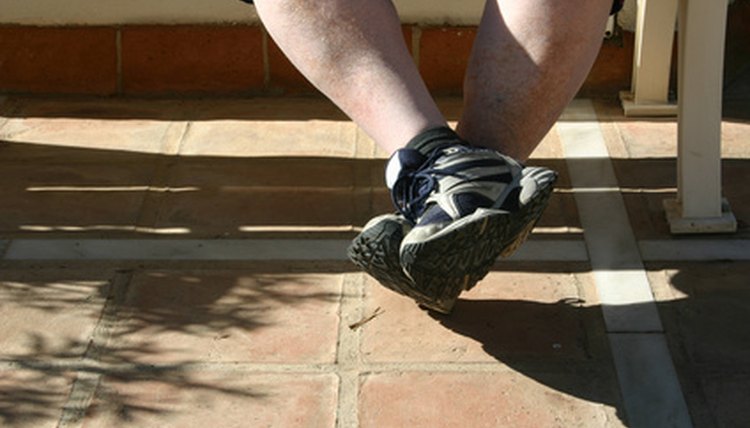The Hardest Area of the Body to Tone or Build

Each person may have a single muscle group that both infuriates and perplexes them, one that differs from somebody else, but generally the hardest muscles to build are those found in the calves. This is due to the anatomical configuration of the calf muscles. They resist the act of hypertrophy--meaning the synthesis of muscles--much more than other muscle groups.
Muscles
The calf is composed of two major muscles. The gastrocnemius, which is 51 percent fast-twitch muscle fibers, originates behind the knee on the femur and attaches to the heel with the Achilles tendon. The soleus, which is about 80 percent slow-twitch muscle fibers, lies beneath the gastrocnemius on the rear of the lower leg. It is most active when the knee is bent. The other muscles include the tibialis, both anterior and posterior, and the peroneus.
Nerves
The calf is a difficult area because of poor nerve supply. There are three times as many nerves in the face compared to the legs, and the legs have carved out an area in the brain three times larger than the area dedicated to calves alone, according to Dr. David Ryan, a professional bodybuilder and former strength and training coach at Ohio State. This is an average; some people might have a little more than others. But calf function does require a disproportionate amount of concentration compared to other parts of the body.
Genetics
Genetics have a strong role in calf size. They have partial control over the amount of muscle, nerve distribution and type of muscle--slow twitch or fast twitch. This is true for all muscles, but calf muscles are at a particular disadvantage because of poorer coordination. Some people naturally use their hips and upper legs as they walk because of nerve and muscle distribution, taking the burden away from the calves. This prevents the buildup of strong calf muscles in many people.
Circulation
Calf muscles are the farthest major muscles away from the heart, so it takes more time and pressure to get the blood to and from the calves. To compensate, the legs typically have larger blood vessels--about 65 percent of the blood supply goes to your legs--but the calves tend to receive poorer circulation.
Solution
One way to improve coordination and strength is to place more balance on your heels and thus your calf muscles. You can easily integrate this into your training sessions. All you need is some kind of a step. Stand on the step, raise your heels into the air and tighten your calves. Do this for about 20 to 30 total reps. Other calf exercises include leg presses, barbell calf raises and donkey calf raises.
